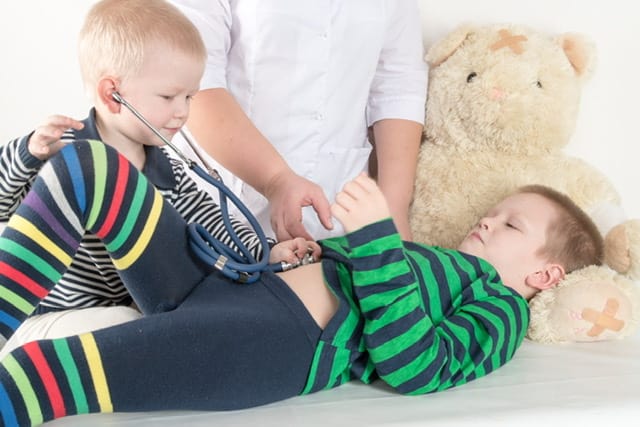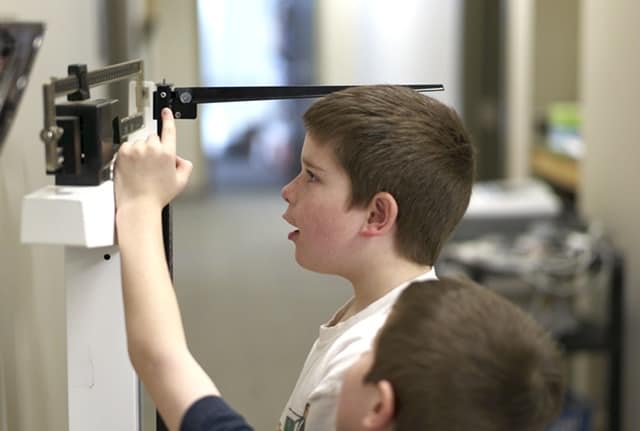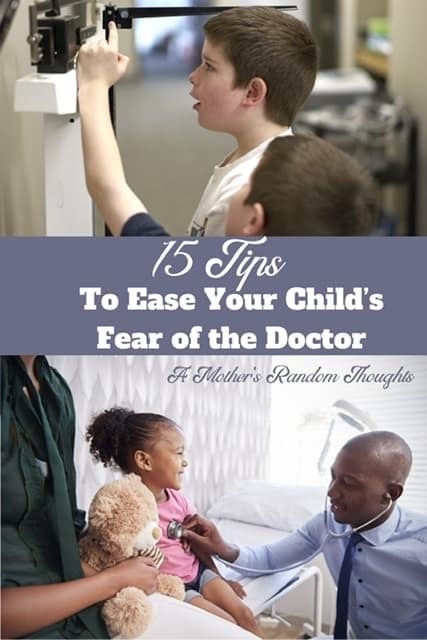Helping Your Child Deal with Real Fears
Children’s directions during routine checkups, or visits for illness or pain, at the doctor can vary widely based on age and temperament. Some children are able to remain calm, whereas others can become so distressed that the whole visit becomes upsetting and traumatic. Soothing a child’s nerves isn’t always easy, but there are some strategies that work better than others and can set you up a for successful visit. There are also some tactics that many parents try that can actually make things worse. These 15 tips to ease your child’s fear of the doctor should help eliminate some of the anxiety of visiting the doctor.

1. Prepare Them Before The Visit
Educating your children in advance is the most effective way to alleviate their fears. Parents might be able to start these conversations with age-appropriate books, TV shows, or even a toy doctor’s kit for a pretend run-through of the visit.
Childhood fears are very real, and whether you have a neurotypical child or a child on the autism spectrum, preparing them for a visit is essential if you want a trauma-free (or lower trauma) visit.
Image – free for commercial use
The biggest fear kids have is often the unknown. Anything that makes visiting the doctor, dentist, or specialists like a Pediatric Chiropractor, feel more familiar, especially if this exposure can happen at home where they feel comfortable.
2. Do Talk Openly about the Visit
Too many parents make the mistake of not telling their child about the doctor’s visit. This only sets the parent up for more trouble down the road. Every time you are driving somewhere, your child will wonder if they are going to the doctor. If it is an event on the calendar, the child can mentally prepare for the visit.
3. Buy Your Child a Toy Doctors Kit
All of my children had a toy doctor kit complete with a needle, stethoscope, bandage, and thermometer. Talking about the medical equipment your child will see and the tools the doctor uses will help your child’s fear and give them a sense of control over the situation. Use language they will hear in the doctor’s office. A child’s medical kit helps prepare them for a lifetime of visits.
Important words and tools include:
Stethoscope, tongue depressor, otoscope (to look into the ears), blood pressure cuff, thermometer, syringe, needle.

4. Visit the Doctor’s Office Before the Visit
Many children (and adults) have a fear of the unknown. If it is a new pediatrician’s office, visit before the actual doctor’s visit. Before visiting, call and see when would be the best time to visit. Most doctors and their staff want your young children to be comfortable in their offices.
5. Don’t Create Fears Or Joke About Needles
Parents report that their child’s biggest source of fear involves getting a shot. For small children, their early visits to the doctor’s office that they can remember are often for vaccines, so this worry is understandable. Be careful not to inadvertently encourage needle phobia.
Parents might say something like, “Sit still for the doctor or you might have to get a shot!” Even if this is said in play, it creates a negative association and can make your kid afraid. Make it clear that shots are never a punishment. They help to keep people from getting sick. Help your child to understand that.
6. Don’t Make Empty Promises
A lot of parents tell their children that there won’t be any shots so they will stay calm and they can get them in the door without a fight, even if immunization is actually part of the appointment.
As a result, children might have to leave without a shot they were supposed to have because they’ve panicked, which is less than ideal. Parents can also break the trust their child has in them, which can them make even more frightened of the doctor next time.
Call the office in advance to know what to expect, and don’t be tempted to lie for an easier life getting your child to the doctor.
7. Don’t Make an Appointment during Nap Time
While this doesn’t appear to be a tip to ease your child’s fear of the doctor, if you visit during the time of day that your child is at their worst, you have just set yourself, the doctor, and your child up for failure.
If your child is still taking a nap, make sure that the appointment time isn’t when they will be napping (unless it is a newborn or small child that can have the appointment while sleeping). Schedule the appointment during the time of day when you know your child is at their best.
More Tips to Ease Your Child’s Fear of the Doctor
8. Bring Something to do for the Waiting Room and Exam Room
Waiting to see the doctor is scary. Fears are heightened at this time. Bring a coloring book, a favorite toy, or a video to watch to help pass the time.

9. Offer Distractions during Procedures
There are no screen time rules when it’s time for a shot. Helpful distractions for kids can include reading a book, listening to music, or watching funny videos. You could also ask your child to cough right before the injection. This can be an effective way to blunt the pain. It’s worth a try.
10. Be Comforting
Holding or hugging the child is better than trying to restrain them, which can just elevate their fears.
Comfort positions allow parents to support their children during procedures. It makes children feel safe and decrease anxiety.
Your own anxiety can also exacerbate your child’s fear, so try to be aware of your own nerves before the appointment and do what you can to hide your own worries from your kids.
11. Bring a Comfort Buddy
Many children have a favorite stuffed animal or blanket. Bringing something that is already a favorite from home will help your child.
12. Bring other family members
A normal doctor’s visit should not require extra assistance, but certain procedures such as blood draws may require some backup. When my son, Jack-Jack was going to get his blood drawn, his older sister who is his closest friend came along and held his hand. Grandma or Dad can also play the part of additional support to help allay your child’s anxiety.
13. Assure Older children that having fears is perfectly normal
Sometimes older kids have a fear of doctors too. But they are afraid to speak out because they don’t want to be labeled as immature. Assure your children that fears are normal. While only 3% of the adult population is afraid of doctors, the procedures that happen at a child’s visit to the doctor are what they are really afraid of. In fact, fear of needles is a common fear hitting the top 10 fears of all adults.
14. Plan for a Special Treat
After the doctor’s appointment, stop for an ice cream cone or go to the park. Create a happy memory that will help your child learn that just because they went to the doctor, doesn’t mean it spoils the entire day.
15. Use these same tactics for medical procedures
These same tips can be used for medical procedures. I remember having my tonsils out at age 5. When I got to the hospital, they asked my mom if I had been told what would happen or if I did a pre-visit to see the hospital. I had not. I was left in the evening in a room with 5 other kids. We spent the night in the hospital ward for our surgeries the next morning. While the other kids in the room were prepared, I had no clue what to expect.
During a medical procedure, children are usually taken from their parents before they are put to sleep. If your child suffers from separation anxiety, see if they can be given a light sedative before the procedure. This can help ease the separation anxiety.
While no two children react the same, these 15 tips to ease your child’s fear of the doctor should help your children’s anxiety before going for an appointment.
Check out Your Child with Autism and the Dentist


Reviewing movies for parents from a Christian perspective since 2005. Know Before You Go!
Christian Homeschooling mom – 30 years and counting
Autism Mom & Disney enthusiast
